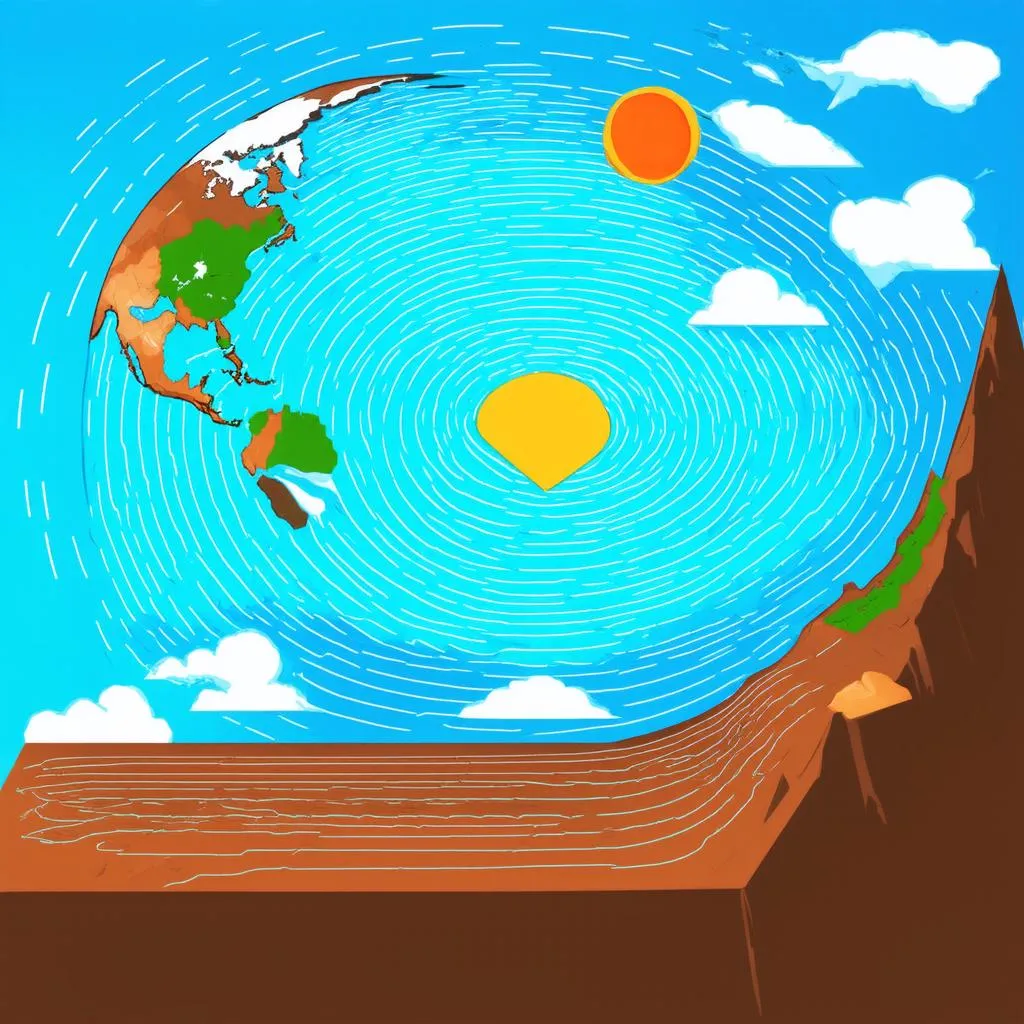Have you ever felt the ground shake beneath your feet and wondered just how far that earthquake traveled? Perhaps you were visiting the iconic Golden Gate Bridge in San Francisco when a tremor hit, or maybe you were exploring the ancient ruins of Rome and felt a distant rumble. Earthquakes, those powerful reminders of our planet’s dynamism, can send vibrations across vast distances, leaving us in awe of nature’s raw energy.
Deciphering the Distance of Seismic Waves
When we talk about how far an earthquake travels, we’re actually talking about the reach of its seismic waves. These waves are generated at the earthquake’s focus, deep within the Earth’s crust, and radiate outwards in all directions. Think of it like a pebble dropped into a still pond, the ripples spreading further from the point of impact.
There are different types of seismic waves, each with its own characteristics and travel distances:
Body waves: These waves, as their name suggests, travel through the Earth’s interior.
- P-waves: These are the fastest seismic waves, similar to sound waves, and can travel through solids, liquids, and gases.
- S-waves: These waves are slower than P-waves and can only travel through solids.
Surface waves: These waves travel along the Earth’s surface and are responsible for most of the shaking we feel during an earthquake.
- Love waves: These waves move the ground from side to side.
- Rayleigh waves: These waves cause the ground to move in a rolling motion, similar to ocean waves.
The distance that seismic waves travel is influenced by several factors:
- Magnitude of the earthquake: Larger earthquakes release more energy, generating seismic waves that travel further.
- Depth of the earthquake: Earthquakes originating deeper within the Earth tend to have a wider reach, as their seismic waves have more distance to travel before reaching the surface.
- Geological composition of the Earth: The type of rock and sediment that seismic waves travel through can impact their speed and attenuation (weakening) over distance.
 Earthquake Waves Diagram
Earthquake Waves Diagram
Can Earthquakes Be Felt Across the World?
While seismic waves from large earthquakes can be detected by sensitive instruments all over the world, the shaking itself is usually not felt at such vast distances. The intensity of shaking decreases with distance from the epicenter, the point on the Earth’s surface directly above the earthquake’s focus.
However, there have been instances where people have reported feeling the effects of distant earthquakes, particularly those with a high magnitude. For example, the 2004 Indian Ocean earthquake, one of the most powerful earthquakes ever recorded, generated tsunamis that devastated coastlines thousands of miles away. To learn more about the impact of this catastrophic event, you can read about how far the 2004 tsunami traveled.
Planning Your Travels? Earthquake Safety Tips
While earthquakes are a natural phenomenon that we cannot predict or control, there are steps you can take to stay safe while traveling to earthquake-prone regions:
- Research your destination: Before you go, familiarize yourself with the earthquake history and safety guidelines of the area you’ll be visiting.
- Identify safe zones: Learn the evacuation routes and safe zones within your hotel, tour group, or any buildings you’ll be spending time in.
- Pack an emergency kit: Include essential items like water, non-perishable food, a first-aid kit, a flashlight, and a whistle.
- Stay informed: Pay attention to local news and weather reports for any earthquake warnings or advisories.
For additional travel tips and resources, visit travelcar.edu.vn.
 Earthquake Preparedness Kit
Earthquake Preparedness Kit
FAQs About How Far Earthquakes Travel
Q: Can earthquakes trigger other earthquakes?
A: Yes, it is possible for earthquakes to trigger other earthquakes, particularly in regions with active fault lines. The stress released by one earthquake can transfer to nearby faults, potentially causing them to rupture and generate new earthquakes.
Q: How are earthquakes measured?
A: Earthquakes are measured using a seismograph, which records the vibrations of the Earth caused by seismic waves. The magnitude of an earthquake is determined using the Richter scale, a logarithmic scale where each whole number increase represents a tenfold increase in amplitude.
Q: Are there any early warning signs of an earthquake?
A: While there is no reliable way to predict earthquakes, some people report experiencing physical symptoms such as headaches, nausea, or anxiety before an earthquake. Animals have also been known to exhibit unusual behavior prior to seismic events.
Embracing the Journey: Traveling with Awareness and Respect
As we explore the world, it’s essential to remember that we are guests on a dynamic planet with forces far greater than ourselves. By understanding the power of earthquakes and taking precautions to stay safe, we can continue to marvel at the beauty and wonder of our planet with respect and awareness.